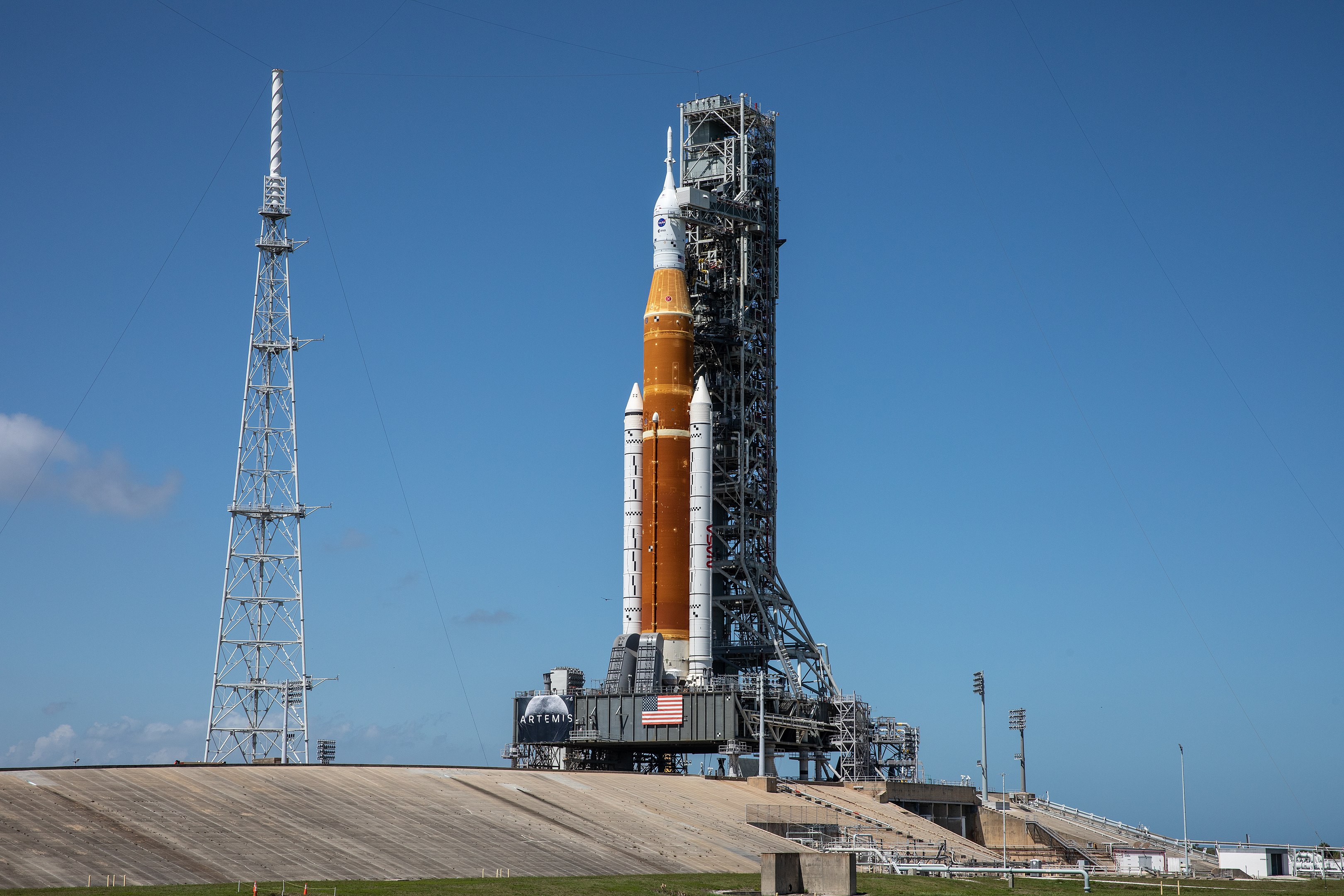NASA's epic Artemis 1 moon mission launch is just 1 week away

NASA's historic Artemis 1 mission will launch toward the moon one week from today (Aug. 22), if all goes according to plan.
Artemis 1, the first mission in NASA's Artemis program of lunar exploration, is scheduled to lift off from Florida's Kennedy Space Center on Aug. 29 at 8:33 a.m. EDT (1233 GMT). You can watch it live here at Space.com when the time comes, courtesy of NASA.
It will be quite an event, and not just for die-hard space fans. NASA's webcast "will include celebrity appearances by Jack Black, Chris Evans and Keke Palmer, as well as a special performance of 'The Star-Spangled Banner' by Josh Grobin and Herbie Hancock," agency officials wrote in an update on Friday (Aug. 19).
"It also will feature a performance of 'America the Beautiful' by The Philadelphia Orchestra and cellist Yo-Yo Ma, conducted by Yannick Nézet-Séguin," they added.
Related: NASA's Artemis 1 moon mission: Live updates
More: NASA's Artemis 1 moon mission explained in photos
Artemis 1 will mark the debut of NASA's Space Launch System (SLS) megarocket, which will send an uncrewed Orion capsule to lunar orbit. Orion will spend six weeks in space, finally returning to Earth in an ocean splashdown on Oct. 10.
Sensors inside Orion will gather data on the deep-space radiation environment and other aspects of the flight. And, not long after liftoff, 10 tiny cubesats will deploy from an adapter connecting Orion to the SLS's upper stage. These little spacecraft will perform a variety of work, from hunting for water ice on the moon to traveling to a near-Earth asteroid using a solar sail.
Breaking space news, the latest updates on rocket launches, skywatching events and more!
But the main goal of Artemis 1 is to demonstrate that SLS and Orion are ready to carry astronauts, which the duo will do in relatively short order if Artemis 1 goes well. NASA aims to launch Artemis 2, a crewed mission to lunar orbit, in 2024. Artemis 3 will then put astronauts down near the moon's south pole in 2025 or 2026, in the first crewed lunar landing since the Apollo 17 mission in 1972.
Unlike Apollo, Artemis is not designed to be a flags-and-footprints operation.
"We will collaborate with commercial and international partners and establish the first long-term presence on the moon," NASA's Artemis page states. "Then, we will use what we learn on and around the moon to take the next giant leap: sending the first astronauts to Mars."
If Artemis 1 cannot get off the ground on Aug. 29 due to bad weather or technical issues, backup opportunities are available on Sept. 2 and Sept. 5, NASA officials have said.
Mike Wall is the author of "Out There" (Grand Central Publishing, 2018; illustrated by Karl Tate), a book about the search for alien life. Follow him on Twitter @michaeldwall. Follow us on Twitter @Spacedotcom or on Facebook.

Michael Wall is a Senior Space Writer with Space.com and joined the team in 2010. He primarily covers exoplanets, spaceflight and military space, but has been known to dabble in the space art beat. His book about the search for alien life, "Out There," was published on Nov. 13, 2018. Before becoming a science writer, Michael worked as a herpetologist and wildlife biologist. He has a Ph.D. in evolutionary biology from the University of Sydney, Australia, a bachelor's degree from the University of Arizona, and a graduate certificate in science writing from the University of California, Santa Cruz. To find out what his latest project is, you can follow Michael on Twitter.
